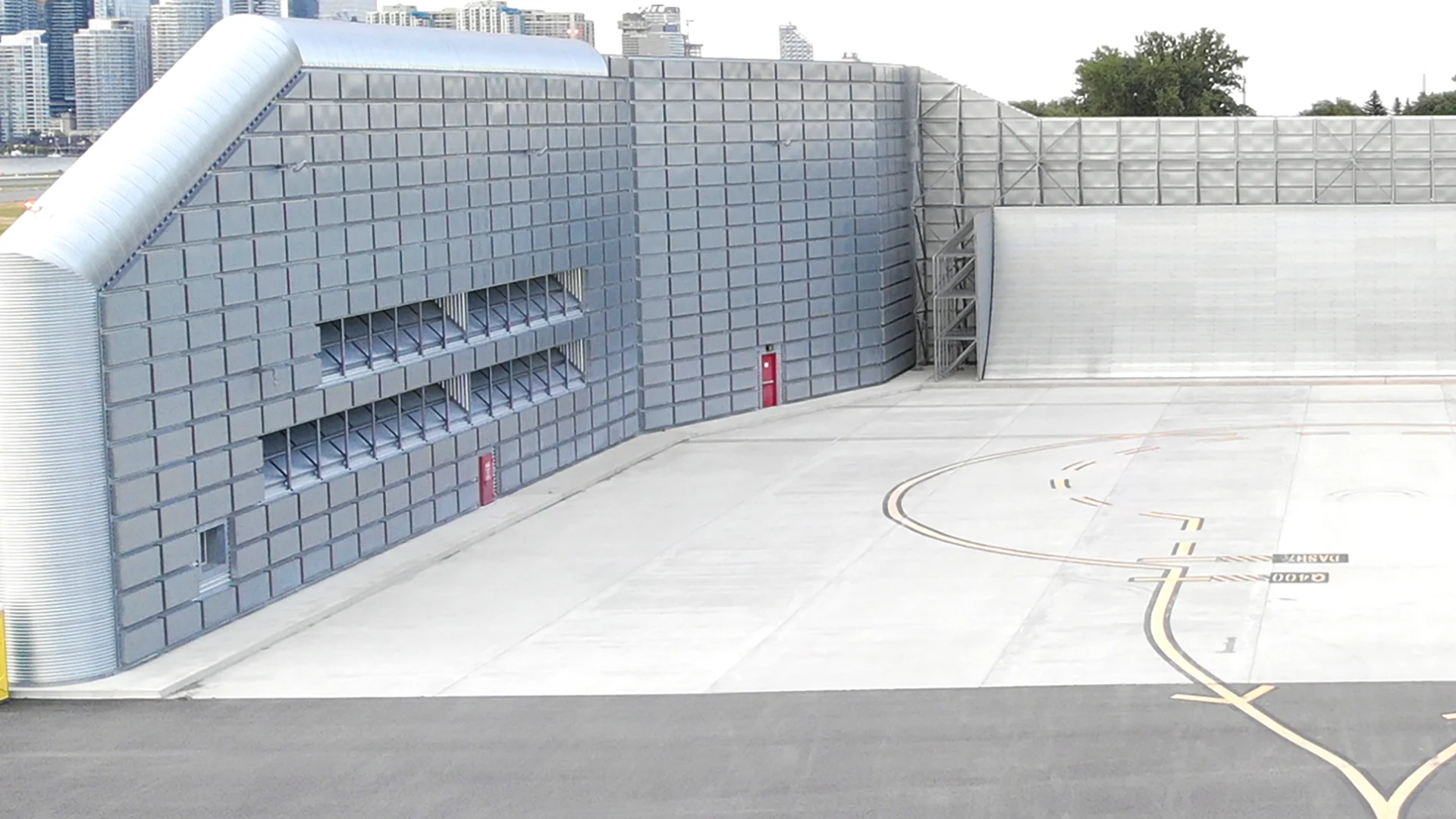Noise Abatement Procedures and Infrastructure
In addition to the policies in place to mitigate operational noise at Billy Bishop Toronto City Airport, we have built significant infrastructure and worked closely with airlines and NAV CANADA to implement aircraft procedures that further dampen and reduce noise in the surrounding community.
Ground Run-Up Enclosure
Engine run-ups are required and regulated by Transport Canada as part of standard aircraft maintenance. However, engine run-ups have been cited by the community as a primary source of noise given testing is often done at high power. In order to mitigate the noise associated with engine run-ups on the community, a Ground Run-up Enclosure (GRE) was constructed at Billy Bishop Toronto City Airport in April 2017. Standing 14 metres in height, the 63-by-66 metre enclosure is located on the southwest side of the airfield and is only the second of its kind in Canada. The enclosure effectively absorbs noise with specialized acoustic panels that line the interior of the three walls, which feature vents for optimal aerodynamic performance.
Enhanced Arrival Procedure
By leveraging satellite-based navigation capabilities, NAV CANADA has enhanced arrival procedure for aircraft operators in order to keep more aircraft over the water on approach to Billy Bishop Toronto City Airport, reducing noise exposure to residentially populated areas.
Further, aircraft operators save as much as five minutes of flying time, which is estimated to add up to an annual reduction of 970 metric tonnes of greenhouse gas emissions. Enhanced arrivals procedures also serve to improve ground positioning for departures at the airport, reducing ground idling and associated emissions, and noise from aircraft waiting to depart.
Calm Wind Runway Procedure
In 2019, Billy Bishop Toronto City Airport implemented a Calm Wind Runway procedure in collaboration with NAV CANADA. For this procedure, aircraft take off and land at the airport from west to east during periods when wind speeds are below five knots. During a trial period, public feedback indicated that this new practice aided in the reduction of noise on the surrounding community.
Learn more about our efforts to mitigate operational noise in our annual Noise Summary Reports.
